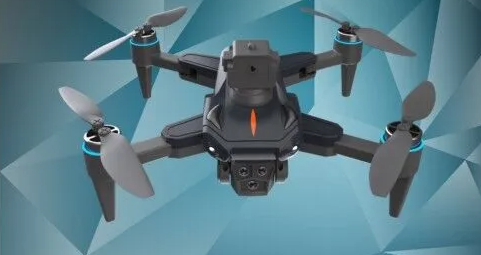Beginner’s Guide to Drones: Everything You Need to Know
Drones, also known as unmanned aerial vehicles (UAVs), are remotely operated aircraft that have gained immense popularity in recent years. Originally developed for military applications, drones are now used across industries and for personal recreation. They range from simple toy-like models to sophisticated machines equipped with high-resolution cameras, GPS, and AI capabilities. At their core, drones consist of key components such as propellers, a flight controller, a battery, and sensors. Understanding these basics is the first step to becoming a drone enthusiast.

Choosing the Right Drone: Factors
to Consider
Selecting the perfect drone can
be overwhelming, especially for beginners, given the vast array of options on
the market. When choosing a drone, consider your primary purpose—whether it’s
for photography, racing, or recreational flying. Entry-level drones like the
DJI Mini series are excellent for those looking to learn the ropes, offering
user-friendly controls and durable builds. For advanced features such as 4K
video recording or GPS navigation, mid-range models are ideal. Additionally,
consider factors like flight time, range, and the availability of spare parts
to ensure you get the most value from your purchase. Check this
https://www.hotfrog.com/company/df9a0c5a49bca77ce0dbe2b9100b3a95/nw-blue/portland/manufacturing
Mastering Drone Controls: Tips
for New Pilots
Flying a drone for the first time
can be both exciting and daunting. Most modern drones come with
beginner-friendly features like auto-takeoff, GPS stabilization, and
return-to-home functions to make piloting easier. Start by practicing in an
open area free of obstacles, and familiarize yourself with the remote control’s
layout, including the throttle, yaw, pitch, and roll functions. Many drones
also include a “headless mode” that simplifies orientation for beginners.
Consistent practice is key to developing confidence and precision, allowing you
to explore more advanced maneuvers over time.
Drone Laws and Safety: What You
Must Know
Understanding drone laws and
prioritizing safety are critical for responsible flying. Most countries have
specific regulations regarding drone usage, such as maintaining visual
line-of-sight, flying below a certain altitude, and avoiding restricted areas
like airports or military zones. In some regions, registration and licensing may
be required for drones exceeding a certain weight. Safety-wise, always check
the weather conditions before flying and inspect your drone for any mechanical
issues. Adhering to these rules not only ensures legal compliance but also
prevents accidents and protects others’ privacy.
Exploring the Possibilities: What
You Can Do with a Drone
Drones open up a world of
possibilities for beginners and seasoned users alike. Many start with
recreational flying, enjoying the thrill of piloting a UAV. As you gain experience,
you can venture into aerial photography and videography, capturing stunning
landscapes from unique perspectives. Drones are also used for racing, where
speed and agility take center stage. Beyond personal use, drones can assist in
mapping, inspections, and even agriculture. The only limit is your
creativity—drones empower you to explore, innovate, and have fun in ways you
never imagined.